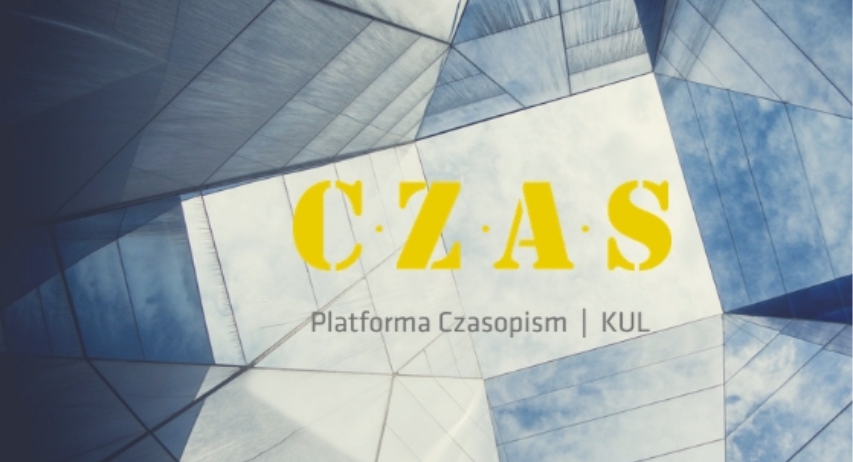Bojanowski – Norwid. Projection of the meeting
Józef Franciszek Fert
Abstract
Two great protagonists of the Polish rebirth in the nineteenth century: Edmund Bojanowski (18141871), today the Blessed Catholic Church, and Cyprian Norwid (1821-1883), today one of the most widely known Polish poets, tête à tête probably never met, however, there were at least a few occasions for that. So, in this sentence, the whole sentence could be terminated. And yet… And yet they were - perhaps not even aware of it - very spiritually close, and in some areas they were an indispensable supplement and complement to their works and activities. We do not know for sure whether Bojanowski and Norwid met in person. But if that happened, what would these two extraordinary people talk to each other? I think one of the most important topics of their conversation could be the sacredness of work. And both for Norwid and Bojanowski , the issues of work are a fundamental, intellectual, moral and practical problem. Such was also the time of history, the time in which the folk elementary element appeared - peasantry, as in Poland and labour - in Western Europe and in the United States, but also in Poland with its large industrial centers like Poznan, Upper Silesia, Łódź, Warsaw or Lviv. In the Bojanowski idea, born of the concern for good upbringing of children, work is just one of the fundamental factors shaping man. Through the smallest activity, as well as serious deeds a careful and serious attitude towards life is formed. Bojanowski in his notes devoted especially to “upbringing in nursery” detailed and carefully calculates works that can be used educationally. And at the same time, he points out that: “Every work, except the usual course, has its ceremonial execution in the form of a rite”. Bojanowski’s educational vision harmoniously intertwines three main factors: the practical aspect of each, even the smallest work, linking the educational process with a broader religious perspective and fundamental participation in the educational processes of the aesthetic element, whose the most important factor is clever play. It is a look at work as an instrument of civilization education, and at the same time the driver of human thought and aspirations towards higher goals (religious, artistic, ethical …) is strikingly close to both Bojanowski and Norwid - the great Poles of the nineteenth century.
Keywords:
Edmund Bojanowski, Cyprian Norwid, work, holiness, education, upbringing, Congregation of Little Servant Sisters, meeting, correspondence, projectionReferences
Bojanowski E., Dziennik, Objaśnił, skomentował i wstępem poprzedził Leonard Smołka, t. I-IV, Wrocław 2009.
Gigilewicz E., s. Opiela M. L. (red.), Prace, szkice i notatki Edmunda Bojanowskiego. Inedita, t. I, Lublin 2016.
Gmerek K., „Pokłosie. Zbieranka literacka na korzyść sierot”, „Biblioteka” 14 (23), 2010
Halkiewicz-Sojak G., Byron w twórczości Norwida, Toruń 1994.
Kochanowski J., Dzieła polskie, oprac. J. Krzyżanowski, Warszawa 1980.
Kopciński J. (red.), Norwid bezdomny. W 180 rocznicę urodzin poety, Warszawa 2002.
Korespondencja Edmunda Bojanowskiego z lat 1829-1871, t. I-II, Objaśnił, skomentował i zarysem monograficznym poprzedził Leonard Smołka, Wrocław 2001.
Kubiak B., Historia Pudliszek. Józef Łubieński, nowy właściciel. http:/krobia.hom.pl.
Lenartowicz T., Poezje wybrane, wybrał, wstępem i przypisami opatrzył P. Hertz, Warszawa 1957.
Lenartowicz T., Jabłonowska J., Korespondencja, oprac. J. Fert, Lublin 2004.
Motty M., Przechadzki po mieście, oprac. Z. Grot, t. I, Warszawa 1957.
Norwid C. K., Pisma wszystkie, zebrał, tekst ustalił, wstępem i uwagami krytycznymi opatrzył J. W. Gomulicki, t. I – XI, Warszawa 1971 – 1976.
Norwid C. K., Dzieła wszystkie, red. nacz. S. Sawicki, t. IV, Lublin 2011.
Szweykowski Z. (red.), Literackie przystanki nad Wartą, Poznań 1962.
Trojanowiczowa Z., Dambek Z. Kalendarz życia i twórczości Cypriana Norwida. t. I: 1821-1860, Poznań 2007.
License
This is an open access journal.
Beginning with Issue 1/2024, all texts published under a Creative Commons Attribution CC BY 4.0 licence.
The texts in Issues from 3/2018 to 4/2023 are published under a Creative Commons Attribution-NonCommercial-NoDerivatives CC BY-NC-ND 4.0 licence.
For aricles till 2/2018 your use is permitted by an applicable exception or limitation – see: Ustawa z dnia 4 lutego 1994 r. o prawie autorskim i prawach pokrewnych.





